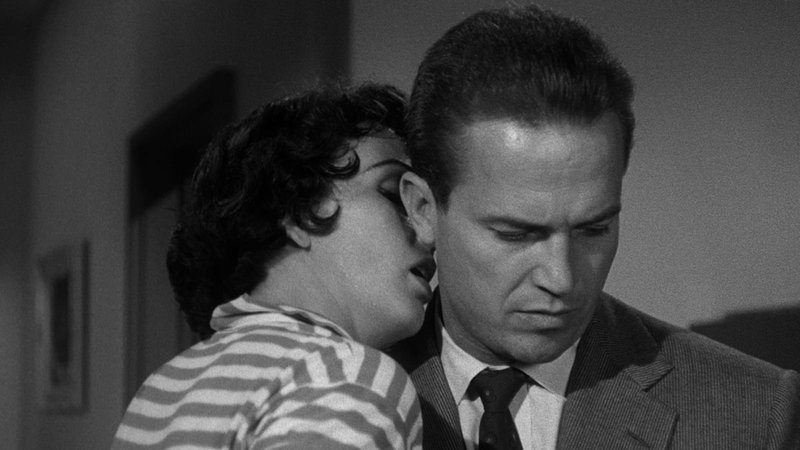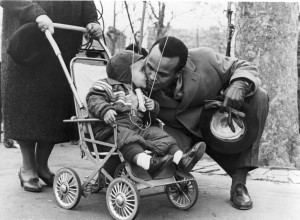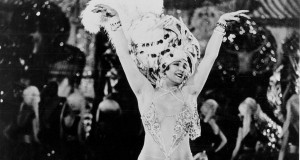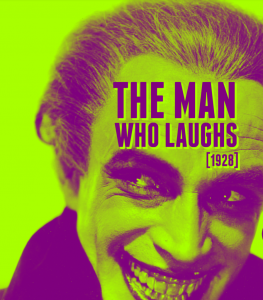Kiss Me Deadly Melanie Kelly

Share this
We began our 2019 film noir season with Jules Dassin’s The Naked City (1948), a police procedural filmed on location in New York, that used techniques associated with documentary film-making and neo-realism.
This was followed by John Huston’s heist movie The Asphalt Jungle (1950), partly filmed in Cincinnati, which drew on some of the themes found in naturalism and American proletarian literature.
Our third film is Robert Aldrich’s Kiss Me Deadly (1955), a cynical Cold-War-era thriller set in Los Angeles, which in its closing moments seems to be heading into the realms of science fiction, reflecting the fears many people felt living through the escalating arms race between East and West.
Unlike Manhattan with its walkable streets set out in an easily navigated grid system and its integrated public transport, modern-day Los Angeles is a city associated with unplanned urban sprawl and high dependency on the motor car. However, if you can escape the congested inner-city streets, within a relatively short time you could be driving among the hilly shrub-lands west of the San Fernando Valley – where the film begins – or visiting a Malibu beach-house, where the film ends. (The house, incidentally, features at the conclusion of another film directed by Robert Aldrich, Whatever Happened to Baby Jane released in 1962.)
Kiss Me Deadly is a time-capsule of a Los Angeles that has now been lost. Many of the external scenes were filmed in the slowly decaying down-town neighbourhood of Bunker Hill. Between 1959 and 1964 it is estimated that up to 9,000 residents were evicted from the area as part of the Bunker Hill Urban Renewal Plan, which covered a 134-acre site. Most of those people were of the urban poor with limited options as to where they could live. All the existing homes – which included once elegant mansions dating from the 1870s to 1920s that had been converted to multi-occupancy tenements – were demolished, along with 132 non-residential structures. The hill was also reduced in height. The blocks of land were then sold to developers and used for the building of parking lots and commercial skyscrapers. (See Movie Tourist for information about some of the specific locations used in the film and the website On Bunker Hill: A Lost Neighborhood for further details about the history of the area and its redevelopment.)
Kiss Me Deadly is loosely based on a 1952 novel of the same name by Mickey Spillane. The book was the sixth in Spillane’s Mike Hammer series, which began with I, the Jury in 1947. The writer and philosopher Ayn Rand admired Spillane’s clear-cut morality but he was loathed by literary critics for the sex, sadism and clunky prose found in abundance in his books. Such criticisms didn’t bother Spillane as he was popular with his readers. He said: ‘Those big-shot writers could never dig the fact that there are more salted peanuts consumed than caviar [,,,] If the public likes you, you’re good.’
Spillane wrote I, the Jury in the hope of making enough money to buy a house for himself and his first wife. The book sold six and a half million copies in the US. A survey of all-time best-selling American fiction drawn up in 1980 included seven titles by Spillane in the top 15. (It should be noted, that as a pulp-fiction writer, most of Spillane’s early books sold for only 25 cents each, but the sales figures are still impressive and mark the emergence of a demand for mass-market cheap paperbacks.)
Spillane’s Mike Hammer lacks much of the wit, intelligence, thoughtfulness and empathy displayed by other fictional Private Investigators such as Dashiell Hammett’s Sam Spade, Raymond Chandler’s Philip Marlowe or, my personal favourite, Ross MacDonald’s Lew Archer. Hammer was originally conceived as a character for a comic-book rather than a novel. He is a war veteran, an American patriot, a committed anti-Communist and someone who relishes describing the violence he metes out to those who stand in the way of his pursuit of justice.
In the film, Hammer is played by Ralph Meeker, a charismatic actor who was often cast in tough-guy roles, being able to handle fight scenes convincingly and deliver hard-boiled dialogue with an appropriate snarl and a sneer. Meeker was mainly confined to character parts in films – one of his best roles was in Stanley Kubrick’s Paths of Glory (1957) – but he had a more distinguished stage career, replacing Marlon Brando as Stanley Kowalski in the original Broadway production of Tennessee Williams’ A Streetcar Named Desire and winning a New York Critics Circle Award as the lead in William Inge’s Picnic. He was a member of the Lincoln Center Repertory Theater under Elia Kazan.
The Mike Hammer we see in Kiss Me Deadly is not entirely Spillane’s creation. This Hammer is the product of a script by A I Bezzerides, who, unlike the right-wing Spillane, was politically on the liberal left. Bezzerides had written social conscience movies while under contract to Warner Brothers and, although he was never blacklisted during the McCarthy period, he was on an unofficial grey list which meant he was viewed with suspicion by many studio heads. With the full-backing of maverick producer-director Aldrich – who was often viewed as a Hollywood outsider – he made major changes to the plot of what he considered to be a ‘lousy’ book and subverted Spillane’s heroic Hammer, revealing him to be a narcissist, a bully and someone too conceited to realise just how far out of his depth he is on this case. However, thanks to Meeker’s performance, Hammer’s increasing vulnerability and confusion possibly make him a more sympathetic character – if not a more likeable one – by the film’s end.
In the course of his investigation, Hammer encounters a number of women who are clearly much savvier than he is.
Multi-Emmy award-winning actress Cloris Leachman plays Christina. It’s a small role but of vital importance to the plot and gives Leachman an unforgettable entrance, running barefoot down a lonely road at night, pursued by some unseen menace and caught in the beam of oncoming car headlights. This was Leachman’s screen debut.
Also making her debut in the film was Maxine Cooper, playing Velda (pictured above with Meeker), Hammer’s devoted secretary, co-conspirator in sleazy divorce cases and would-be protector. She’s more aware than Hammer of the unstable universe in which they operate, but he doesn’t really listen when she tries to explain the situation to him. Spillane would probably have hated Cooper who off-screen was a political activist, organising campaigns against the House UnAmerican Committee, nuclear armaments and the Vietnam war, and participating in some of the civil rights marches of the 1960s.
Gaby Rodgers plays the mysterious Lily/ Gabrielle, one of the most duplicitous, disturbing and destructive of femme fatales to be found in film noir.
Fans of the great, scene-stealing character actor Jack Elam will be pleased to also find him in the cast, playing a hoodlum. Elam is credited with originating the five-line summation of an actor’s career: Who is Jack Elam? Get me Jack Elam. I want a Jack Elam type. I want a younger Jack Elam. Who is Jack Elam?
Shooting on Kiss Me Deadly was completed in just three weeks. The film was an independent production released through United Artists. It made a profit at the box office but received scant attention from US film critics of the time. However, in France it was embraced by the burgeoning New Wave. Francois Truffaut called it ‘the cinema event of 1955’. He wrote in Cahiers du Cinema: ‘We have loved films that had only one idea, or 20, or even 50. In Aldrich’s films, it is not unusual to encounter a new idea with each shot.’
In 1997, the long-missing final shots of Kiss Me Deadly were restored by MGM Archivist John Kirk. (Read more about the restoration at DVD Talk.)
Two years later the film was selected for preservation in the United States National Film Registry by the Library of Congress as being ‘culturally, historically, or aesthetically significant’.


